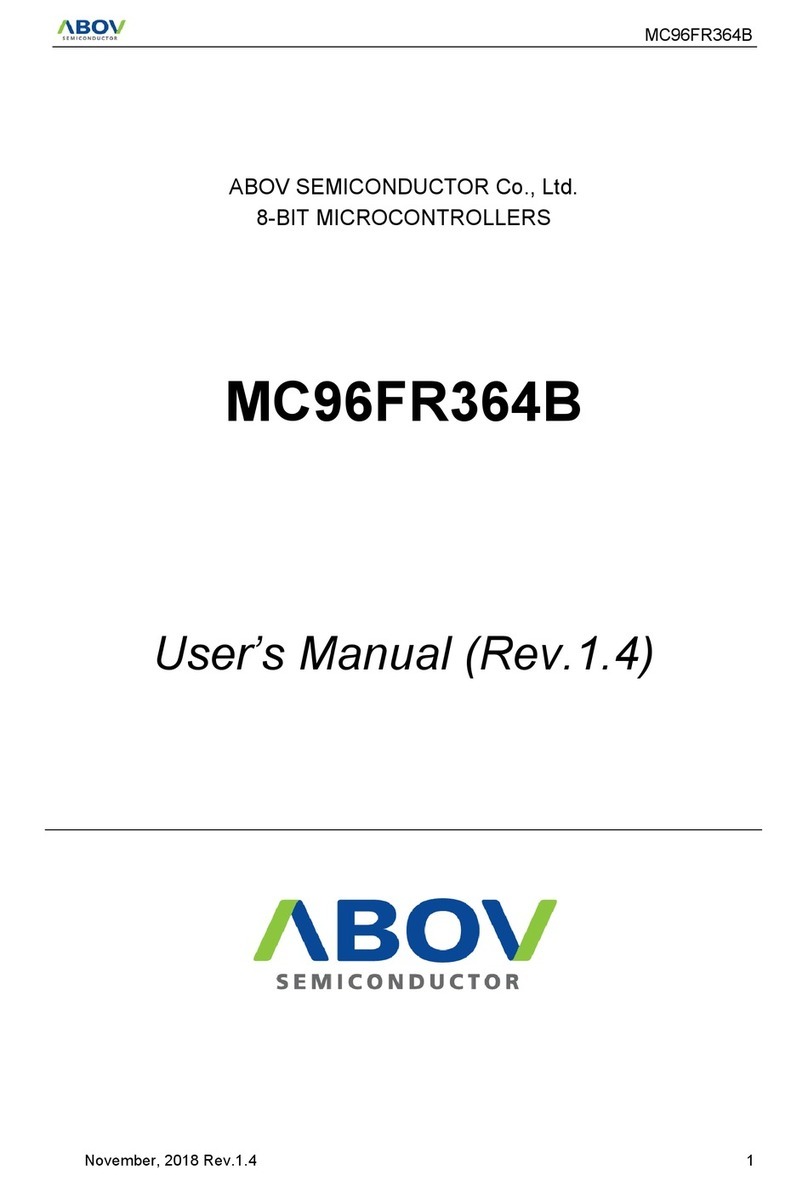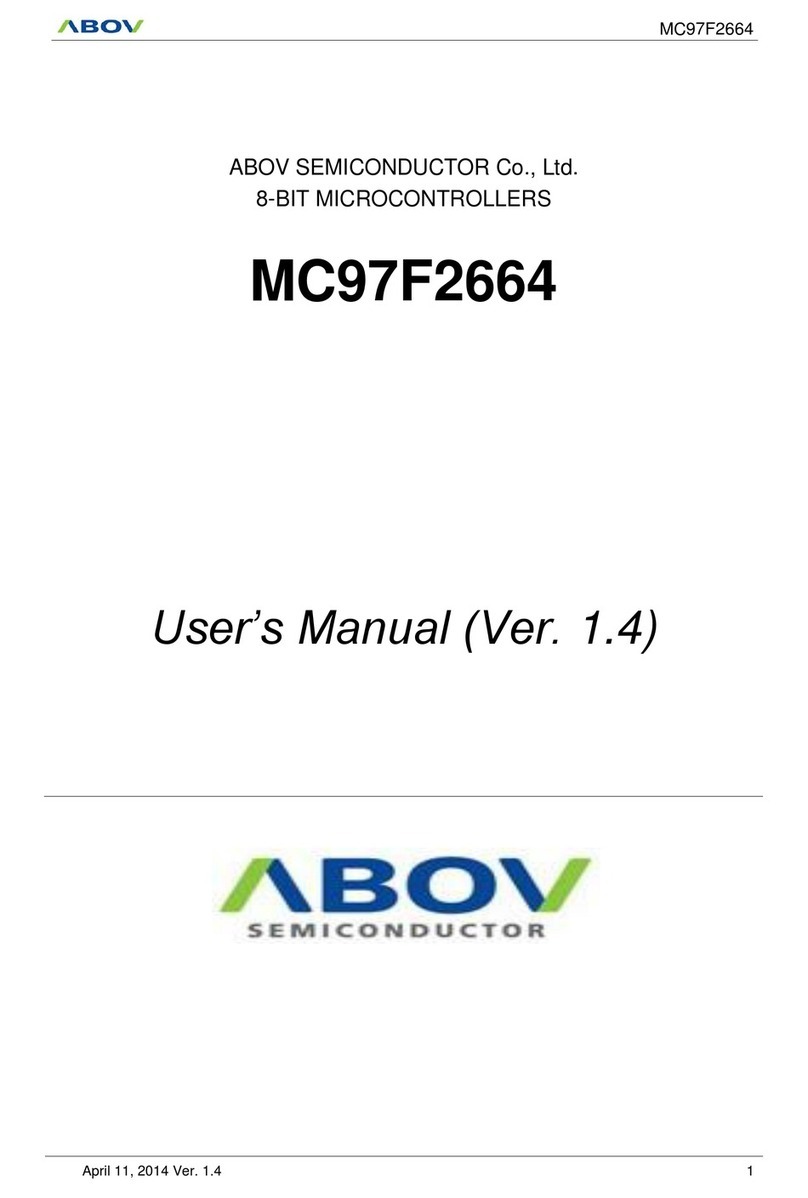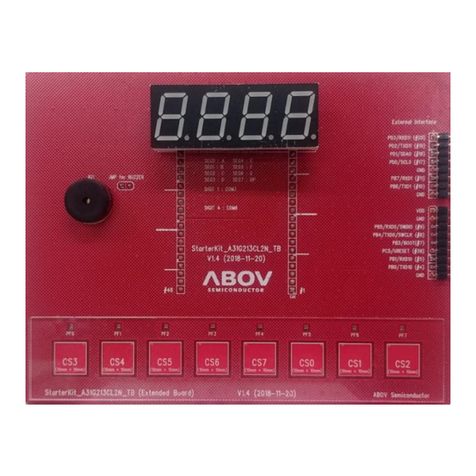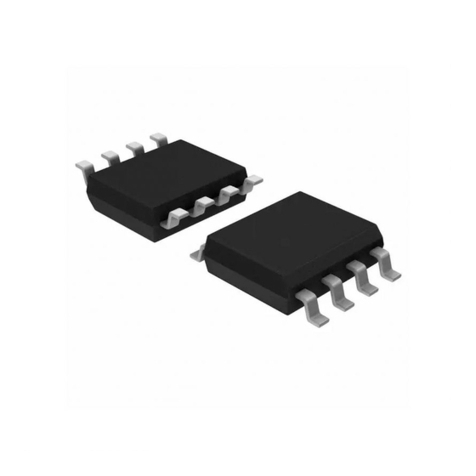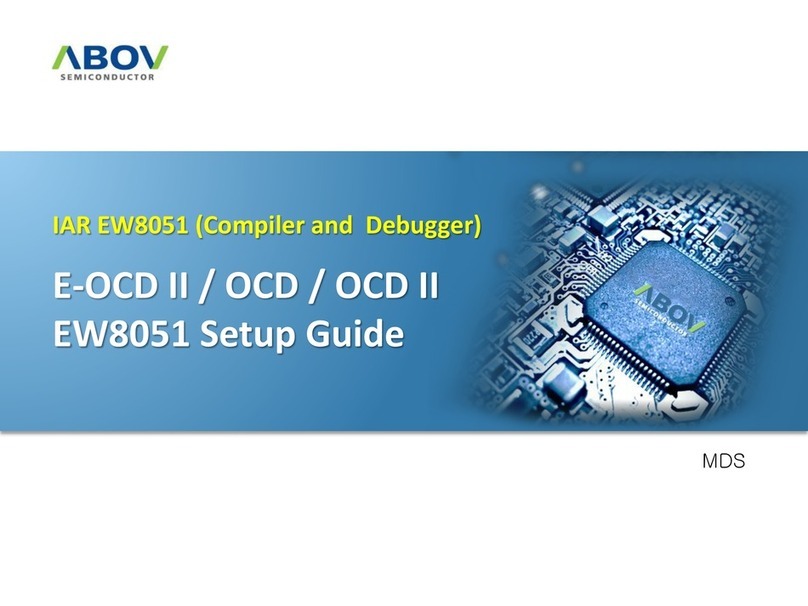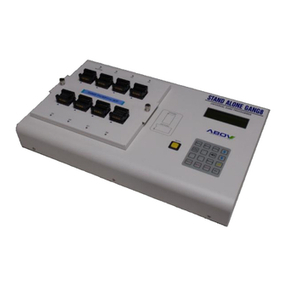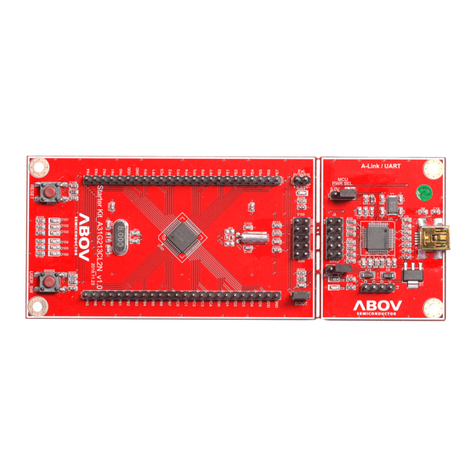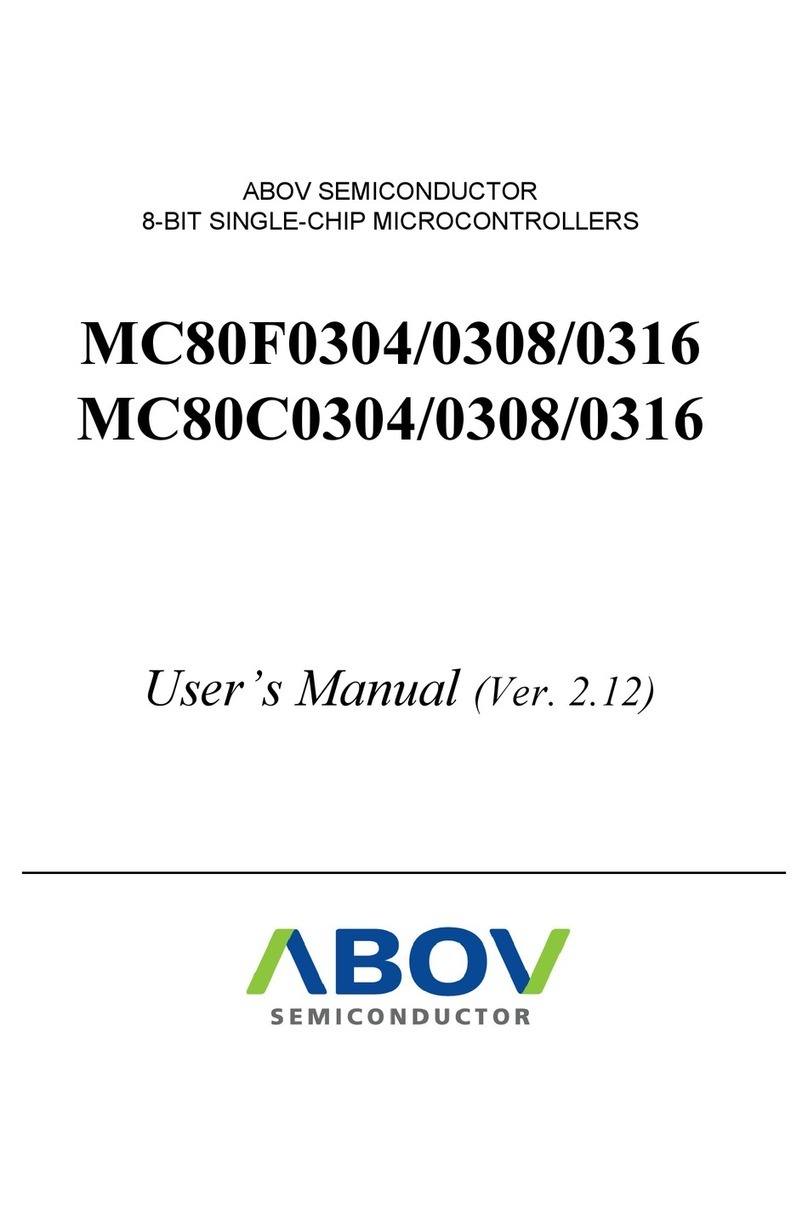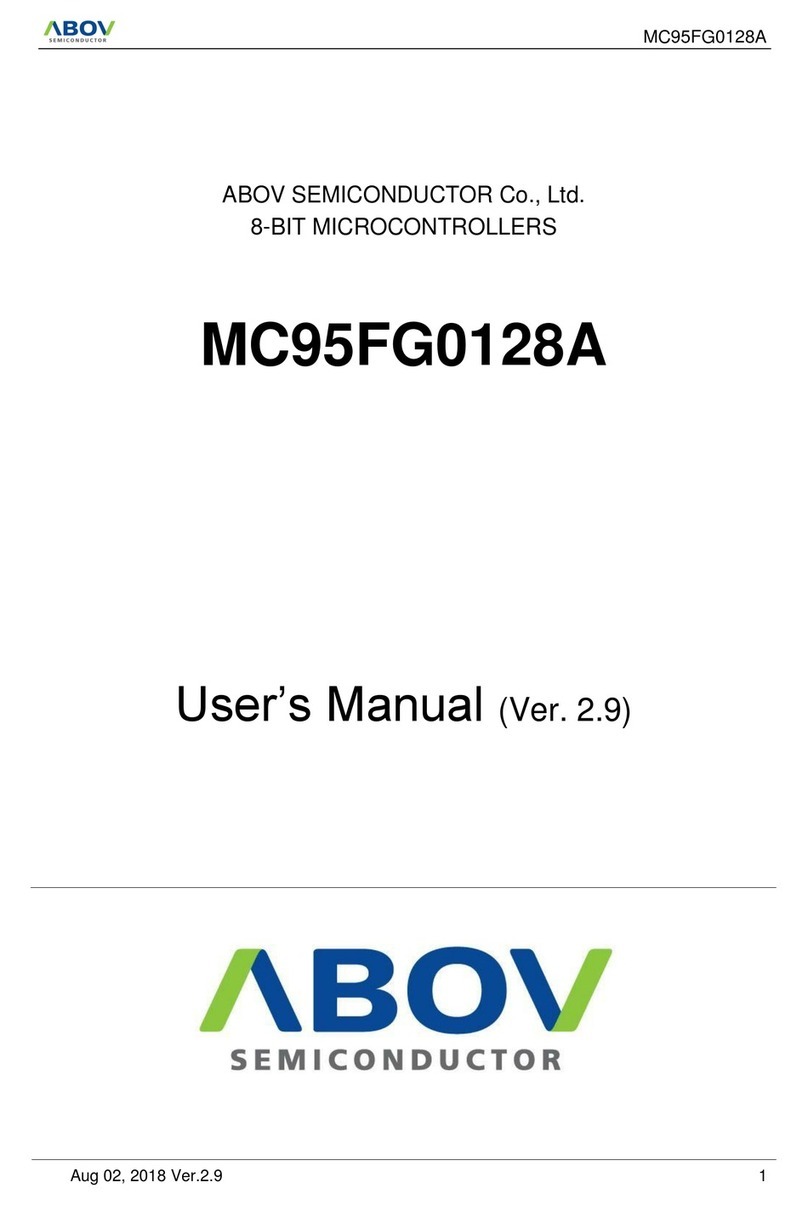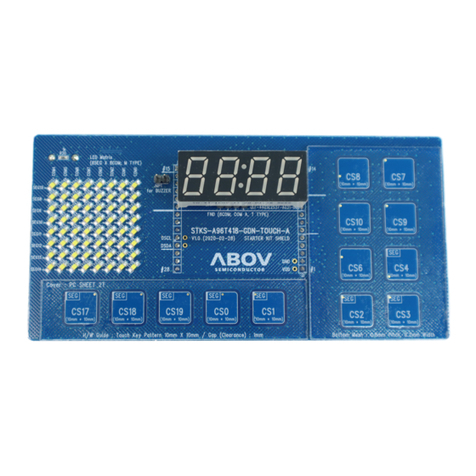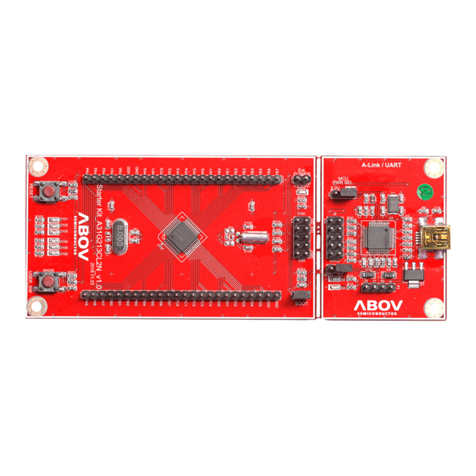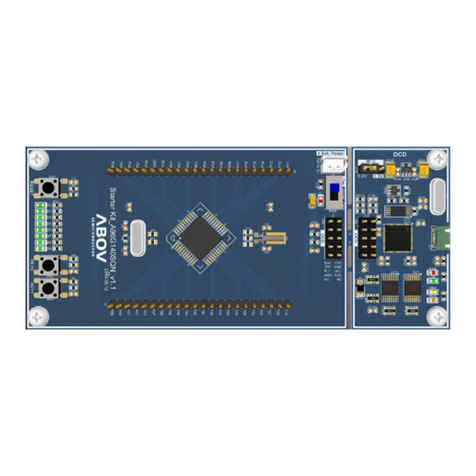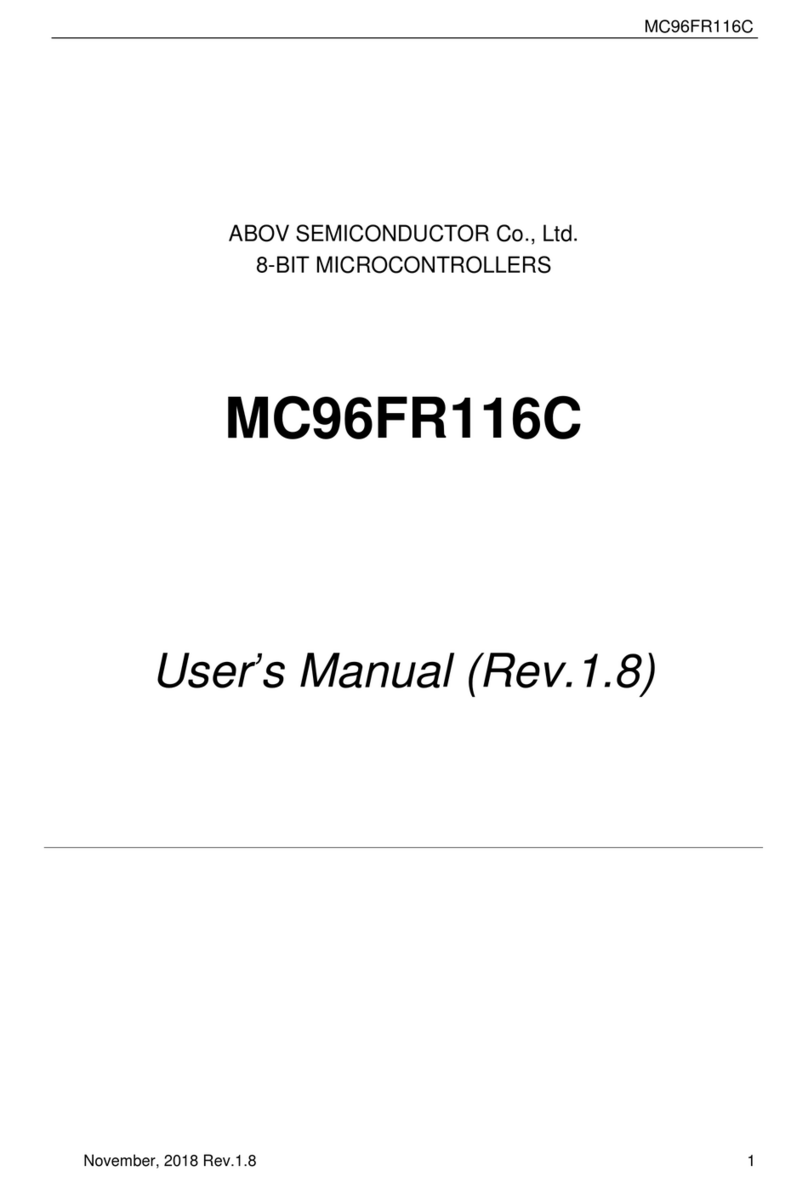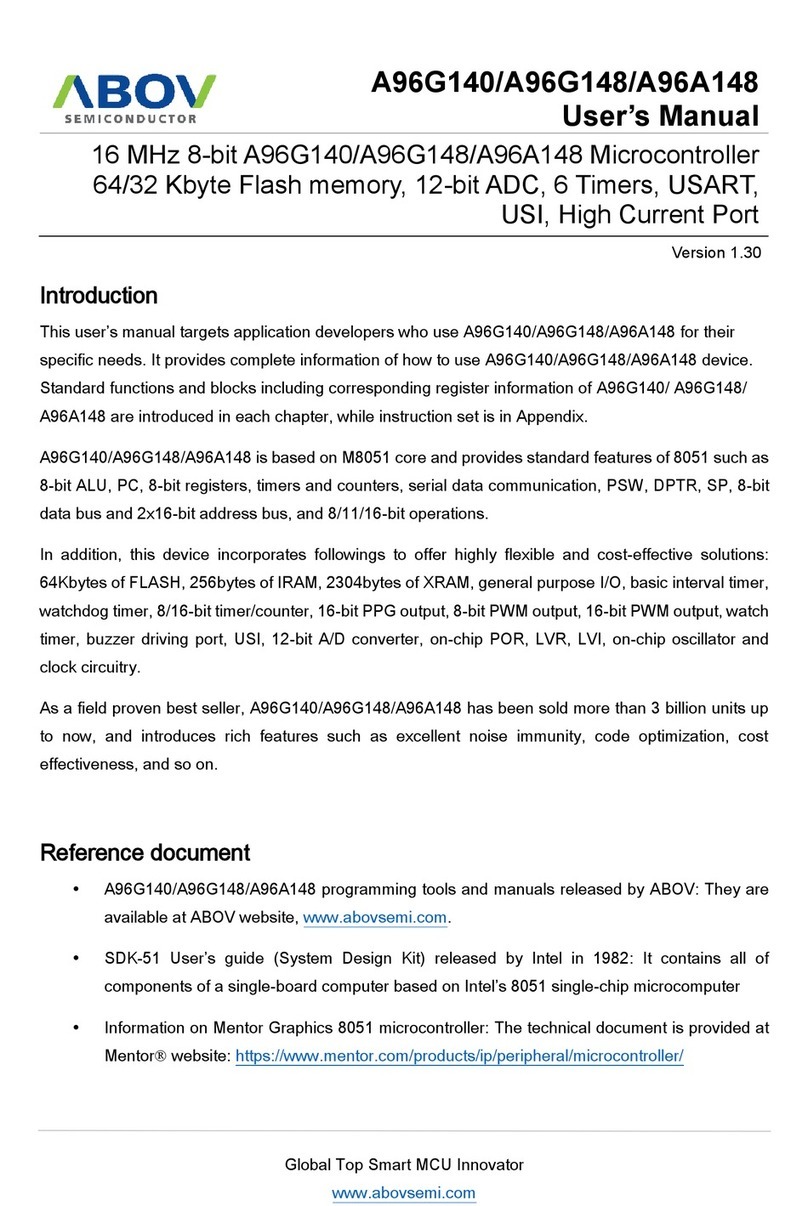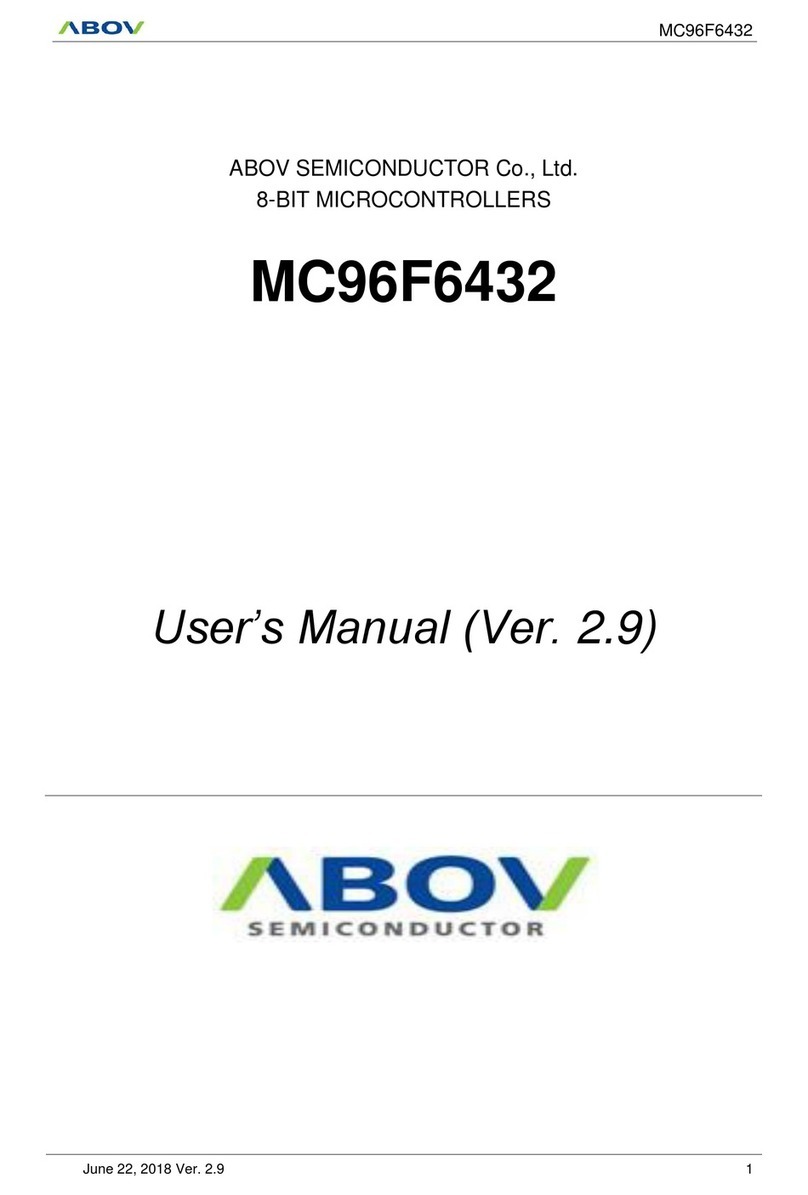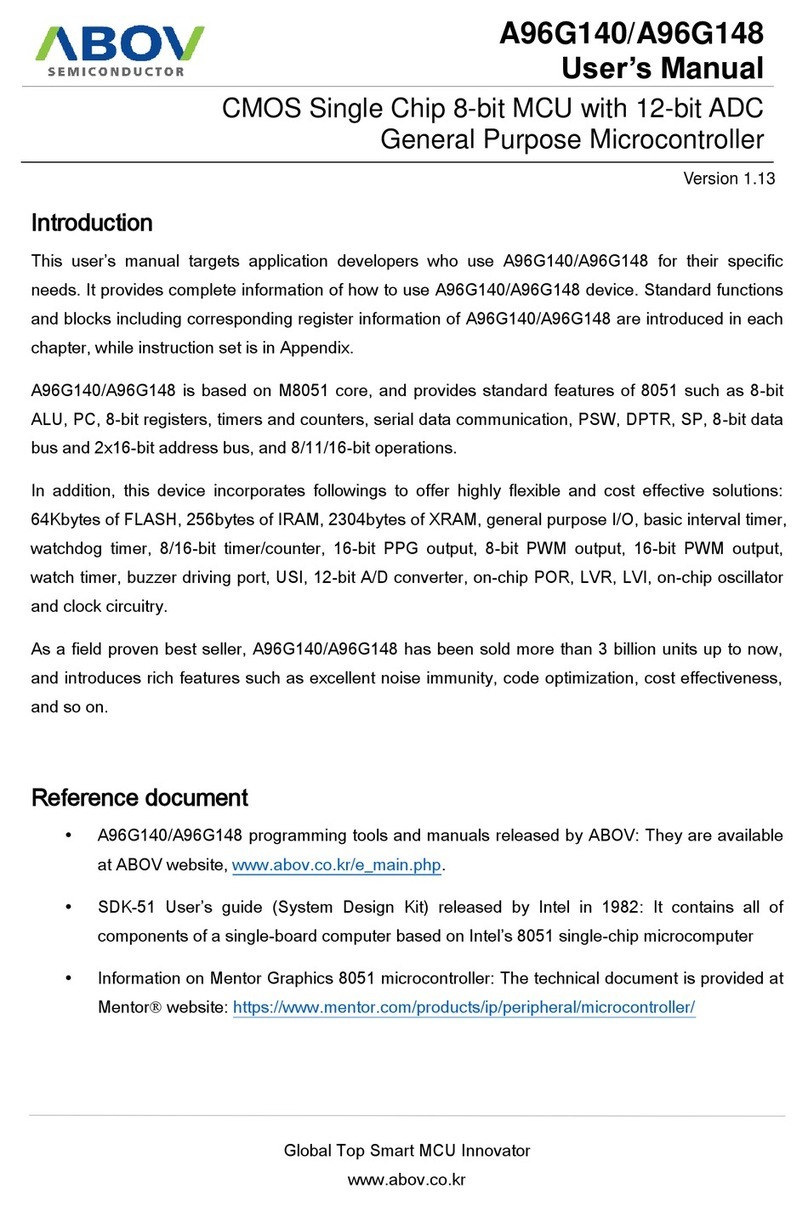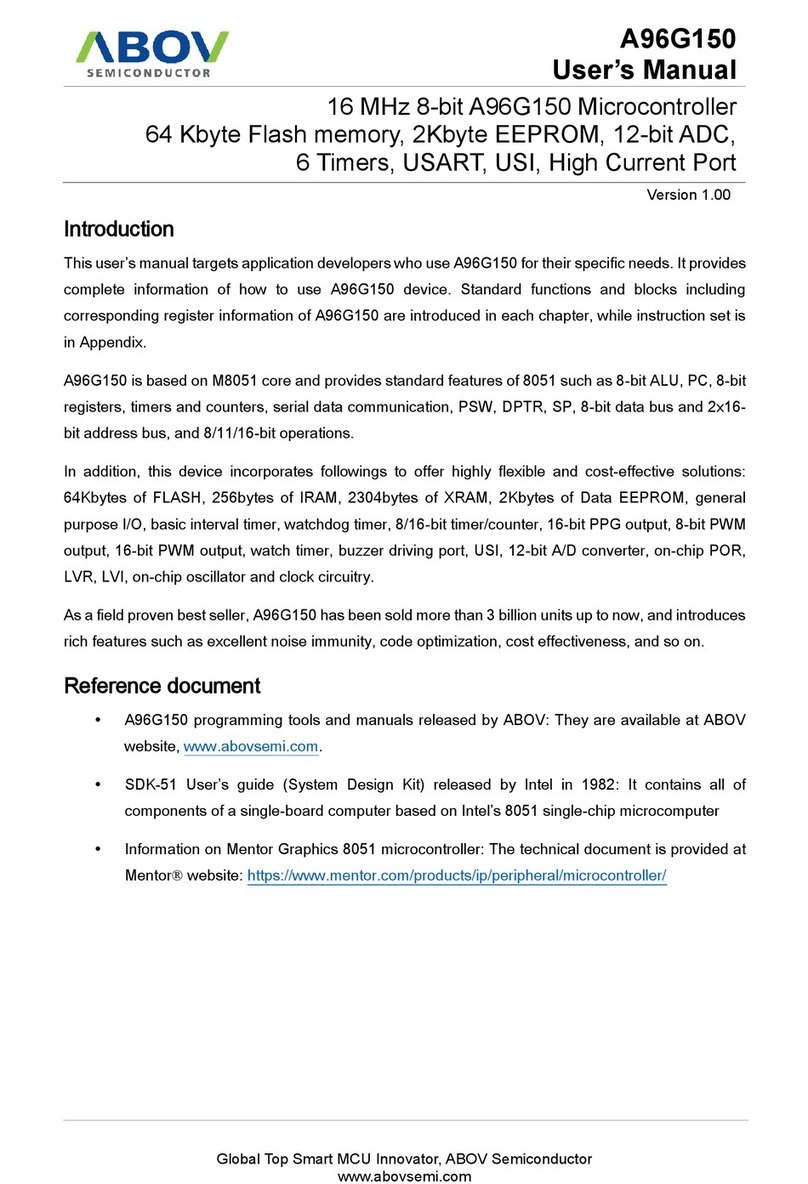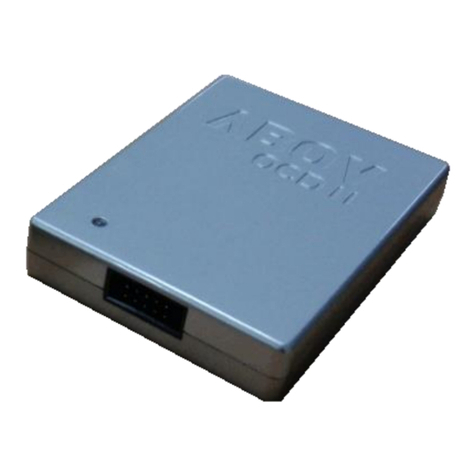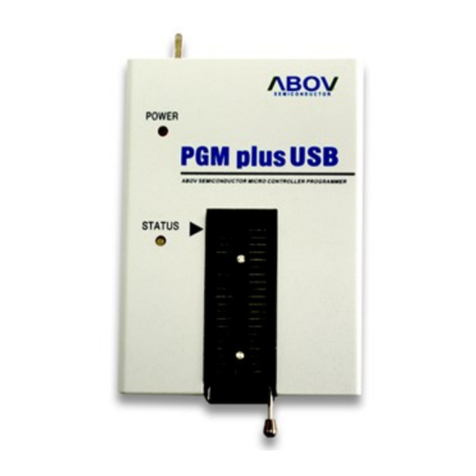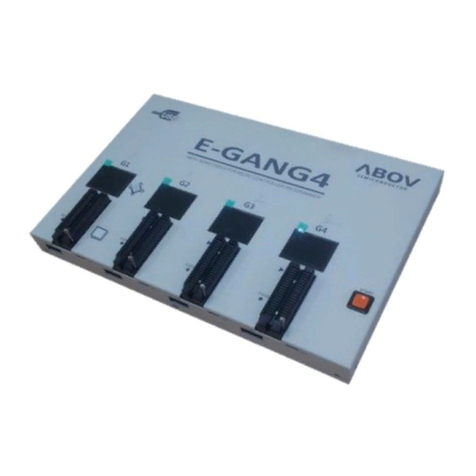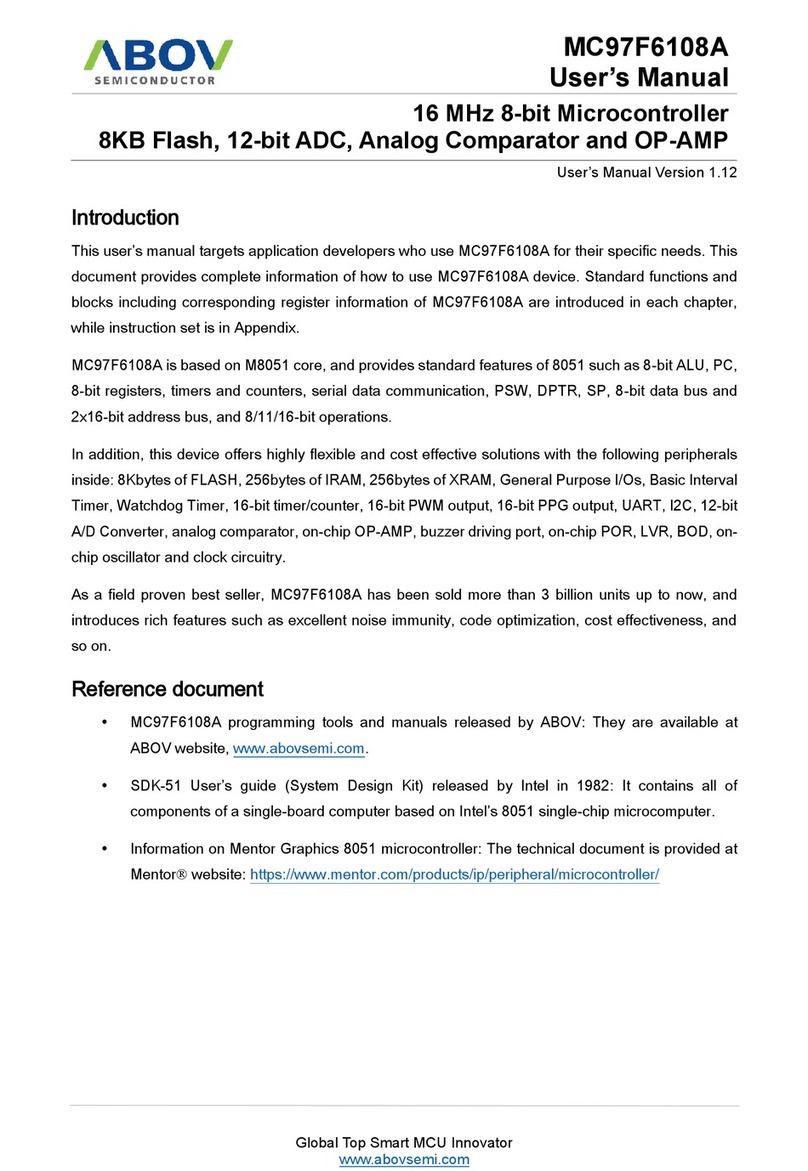
4
ABOV Semiconductor Co., Ltd.
1.2 Features
CPU
–8-bit CISCcore (M8051, 2 clocks per cycle)
ROM (FLASH) Capacity
–32Kbytes Flash with self-read and write capability
–In-System Programming(ISP)
–Endurance : 10,000 times (Sector 0~507)
100,000 times(Sector 508~511)
–Retention : 10 years
256bytes IRAM
768bytes XRAM
–(27bytes including LCD display RAM)
General Purpose I/O (GPIO)
–Normal I/O : 9ports (P0[2:0], P5[5:0])
–LCD shared I/O : 33ports (P0[7:3], P1, P2, P3, P4)
Timer/Counter
–Basic Interval Timer (BIT) 8-bit × 1-ch
–Watch Dog Timer (WDT) 8-bit × 1-ch
5kHz internal RC oscillator for WDT
–8-bit × 1-ch (T0), 16-bit × 2-ch (T1/T2)
–8-bit × 2-ch (T3/T4) or 16-bit × 1-ch (T3)
Programmable Pulse Generation
–Pulse generation (byT1/T2)
–8-bit PWM (byT0)
–6-ch 10-bit PWM for Motor (byT4)
Watch Timer (WT)
–3.91ms/0.25s/0.5s/1s /1min interval at 32.768kHz
Buzzer
–8-bit × 1-ch
SPI 2
–8-bit × 1-ch
USI0/1 (UART + SPI + I2C)
–8-bit UART × 2-ch, 8-bit SPI × 2-ch and I2C × 2-ch
12-bit A/D Converter
–16 Input channels
LCD Driver
–21segments and 8common terminals
–Internal or externalresistor bias
–Two Internal Resistors Selectable
–1/2, 1/3, 1/4, 1/5, 1/6 and 1/8 duty selectable
–Resistor Bias and 16-step contrast control
Power On Reset
–Reset release level (1.4V)
Low Voltage Reset
–12 levels detect
(1.85/ 2.20/ 2.32/ 2.44/ 2.59/ 2.75/ 2.93/ 3.14/ 3.38/
3.67/ 4.00/ 4.40V)
Low Voltage Indicator
–11 levels detect
(2.20/ 2.32/ 2.44/ 2.59/ 2.75/ 2.93/ 3.14/ 3.38/ 3.67/
4.00/ 4.40V)
Interrupt Sources
–External Interrupts
(EINT0~7, EINT8, EINT10, EINT11, EINT12) (12)
–Timer(0/1/2/3/4) (5)
–WDT (1)
–BIT (1)
–WT (1)
–SPI 2 (1)
–USI0/1 (6)
–ADC (1)
Internal RC Oscillator
–Internal RC frequency: 16MHz ±1.5% (TA= 0 ~ +50°C)
Power Down Mode
–STOP, IDLE mode
Operating Voltage and Frequency
–2.2V~ 5.5V (@32 ~ 38kHz with Crystal)
–2.2V~ 5.5V (@0.4 ~ 4.2MHz with Crystal)
–2.7V~ 5.5V (@0.4 ~ 8.5MHz with Crystal)
–2.2V~ 5.5V (@0.5 ~ 16.0MHz with Internal RC)
–Voltage dropout converter included for core
Minimum Instruction Execution Time
–235ns (@8.5MHz main clock)
–61us (@ 32.768kHz sub clock)
Operating Temperature
––40 ~ +85℃
Oscillator Type
–0.4 –8.5MHz Crystal or Ceramic for main clock
–32.768kHz Crystal for sub clock
•Package Type
–48 QFN
–44 MQFP-1010
–32 LQFP, 32 SOP
–28 SOP
–Pb-free package
